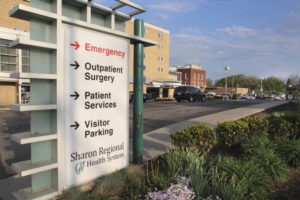 In a medical malpractice case, proximate cause requires a direct link between the medical negligence and the patient’s injuries.
In a medical malpractice case, proximate cause requires a direct link between the medical negligence and the patient’s injuries.
To hold a healthcare provider legally liable in a medical malpractice case, their negligence must be the proximate cause of your injuries. A proximate cause is an incident that results in another event. There must be a clear, cause-and-effect link between the liable party’s negligence and the harm you suffered.
At Medical Malpractice Help, we understand the proximate cause and medical malpractice law. We can look at the details of your case to determine if it qualifies for a medical malpractice lawsuit. Call us today at 888-526-8947 for a free consultation.
What Is an Example of Proximate Cause in a Medical Malpractice Case?
By way of example, imagine a patient reports feelings of extreme fatigue to their doctor. The doctor orders blood tests, which show abnormalities consistent with leukemia. The doctor quickly skims the lab report, does not notice the abnormalities, and tells the patient that there is nothing wrong. Six months later, the patient goes to another doctor, who correctly diagnoses leukemia.
Because of the six-month delay in diagnosis and treatment, the patient’s leukemia is fatal. In this case, the first doctor’s failure to diagnose is the proximate cause of the harm to the patient.
What Happens If There Was an Intervening Cause?
An intervening cause can reduce the responsibility of the doctor or make him not liable at all. An intervening cause is something that happened after the doctor’s negligence, but before the injury.
How an Intervening Cause Affects Liability
Continuing with the previous example, imagine that a few days after the first doctor failed to diagnose leukemia, the patient went to the hospital’s outpatient lab for additional blood tests. The technician who drew the blood negligently injected some air bubbles into the patient’s vein. This became an embolism and caused the patient to suffer a fatal stroke.
In this example, the technician’s negligence was an intervening cause. The amount of liability of the doctor and the outpatient lab will depend on how a judge decides to assign blame to each party.
If the intervening cause is entirely responsible for the injury, we can pursue an action against the negligent party responsible for it. If the intervening cause was only partly to blame, we would file a medical malpractice claim against both negligent parties.
How Will a Lawyer Link Cause and Effect?
Linking cause and effect is an essential step to proving a proximate cause. Based on the prior example, imagine that the first doctor was looking at the wrong patient’s lab results when they failed to diagnose leukemia. Later that day, the doctor realized the mistake, called the patient and ordered additional blood work. Then, the lab technician caused an embolism, which killed the patient.
In this example, we would obtain evidence to show that the patient died because of the lab technician’s negligence, not the doctor’s mistake. Even though the doctor was negligent, their oversight is not what caused the patient’s death.
How Can I Go Over My Case With a Lawyer?
At Medical Malpractice Help, we can help you understand how proximate cause will impact your potential case. Call us today at 888-526-8947 to get answers to your questions during your free consultation.
Proximate Cause - Frequently Asked Questions

Alcohol detoxification is the process of removing alcohol from someone’s body. For people who are heavy drinkers, alcohol detox can be life-threatening. They can experience serious alcohol withdrawal symptoms, so it is dangerous for someone to try to detox alone. It is difficult to find an exact number of deaths due to improper alcohol detoxification.
Read More
There are limitations on attorney fees in Florida medical malpractice cases. State law limits the contingent fees attorneys may charge in medical malpractice cases. At Medical Malpractice Help, we charge on a contingency basis within the state’s guidelines. We also offer free case evaluations, so you can learn more about your legal options before you
Read MoreProximate Cause - News Articles

Zannos Grekos, a cardiologist whose license was revoked by the Florida State Board of Medicine in April after he was found to have committed medical malpractice following the death of a patient, is appealing his case. The case, Zannos Grekos M.D. v. Department of Health, was filed last month with the First District Court of
Read More
Pennsylvania Surgeon Found Negligent for the Death of Thomas A. Natale; A Mercer County Jury Awards Family $5.1 Million Nearly a decade ago, Thomas A. Natale Jr. was standing on the back of a truck at work when he lost his balance and began to fall. Natale tried to brace himself before he hit the
Read More